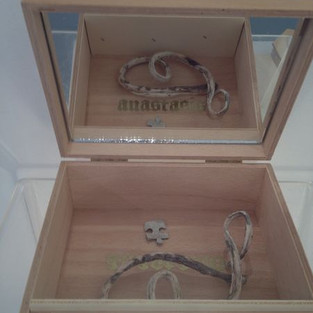Stuck in the Middle with You
- Shaeron
- Dec 24, 2020
- 3 min read
‘Why do we rush about to the top of heaven and the bottom of earth looking for the divine who is here at home with us, if only we would be at home with them?’ (Augustine)
Take a look at the pictures for this week. What do they say to you?
I’m guessing you may not get time to look at this blog when its published. You may well be very busy ‘in the thick of it’, preparing Christmas dinner, last minute present wrapping and spending time with family. Rushing about, as Augustine says. Or perhaps you are having Christmas alone this year: maybe you feel you are on the underside of the festive celebrations, at 'the bottom of earth’.
Wherever you find yourself this Christmas, I hope you find the divine in the midst of your situation. The middle ground is not often seen as something salubrious and yet, if Augustine can be trusted, perhaps it is exactly where we find a spiritual home.
Traditional western thought which draws its ideas from Plato tended to separate the mind, soul and body, or head, stomach and heart; with the rational mind being the most honourable which needed to ‘rule’ our emotions and desires. Over time the church took on these ideas and as Europe became Christianised, this became our pervasive view. Yet if we look at Eastern religions and belief systems, we see a very different perspective. Buddhism and Hinduism see our whole body as having different ‘seats’ of energy, divided into seven chakras. The solar plexus chakra, based around the stomach, is known as the ‘seat of the soul’, right in the middle of the body.
The two pictures I have chosen for this week are taken from my exhibition ‘Amid’ which explored the idea of finding the divine ‘in the midst’ of life. I was not denying either the need for withdrawal and contemplation, nor the importance of the visceral, but considering the possibility that we can find spiritual meaning and connection through our everyday: in the ‘ordinary’ mixture of practical concerns and the inner yearning for profundity. The boxes in the pictures were part of a set in which I had printed words that could only be read when looking in the mirrored lids. I chose words that spoke about the connection with the divine, through lived experience. Darshan is a concept from Buddhism, and Anastasis is an idea from Christianity. Both talk about finding spiritual reality through an active and often challenging engagement with the everyday.
When I was a child, my parents talked about people who were ‘so heavenly minded that they are no earthly good’, and although I feel there was an element of judgement in their comments, there is also an element of truth which perhaps Augustine is talking about. Some are called to be hermits, but many of us are living in the middle, and we need to find the divine just where we are. In the stable of our lives, often, basic, poor and unorganised, but still a home for the love demonstrated in the Christ child. As Meister Eckhart says “In this life we are to become heaven, so that God might come and find a home here”.
Take time to look at the pictures and consider these questions:
- What are you rushing about at?
- When do you feel at the ‘bottom of earth’?
- Where is a home for the divine?
Meditative action:
- Take at least five minutes ‘in the midst’ of Christmas to be at home with the divine in whichever way you find most helpful.
This meditation is commissioned by Leeds Methodist Mission







Comments